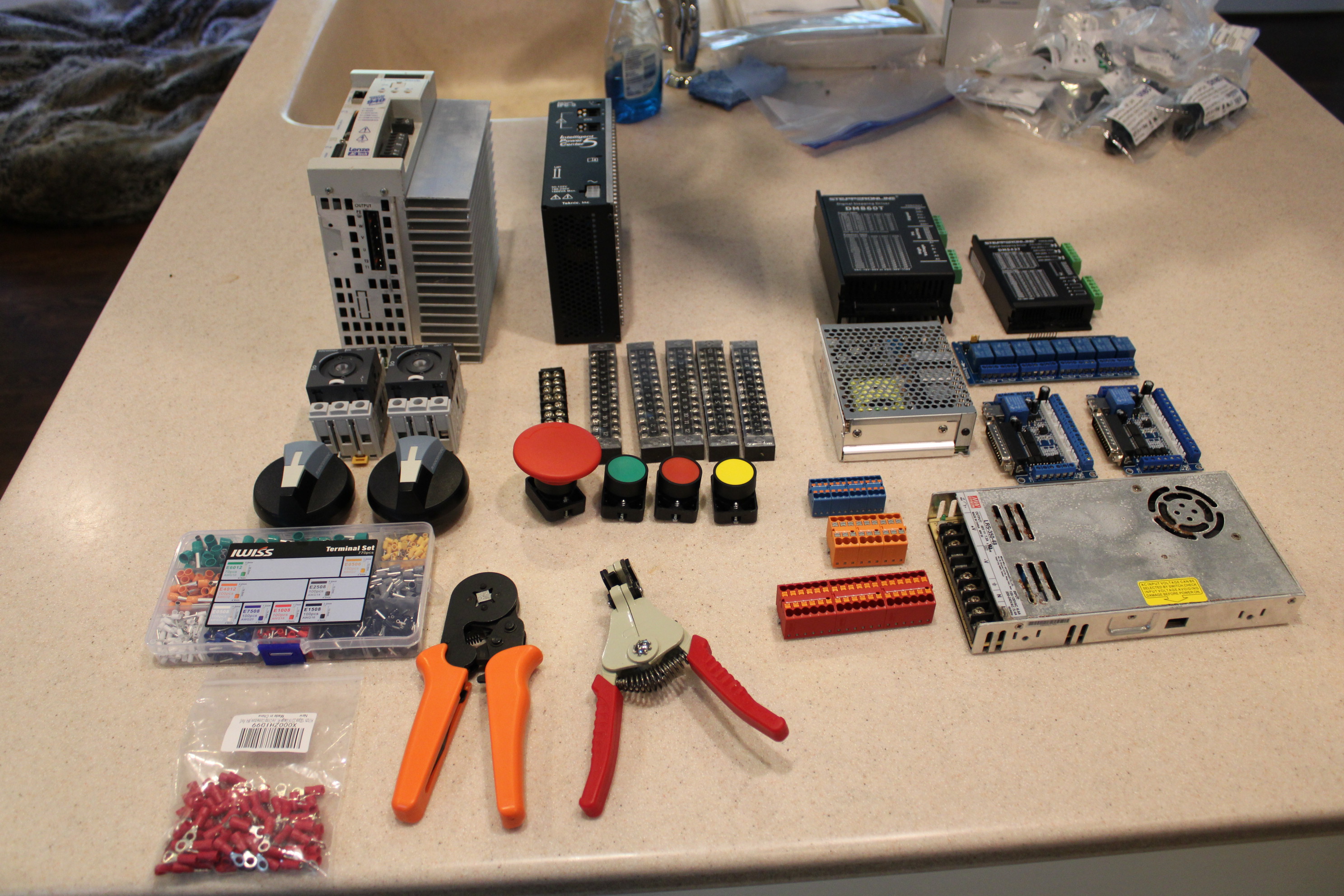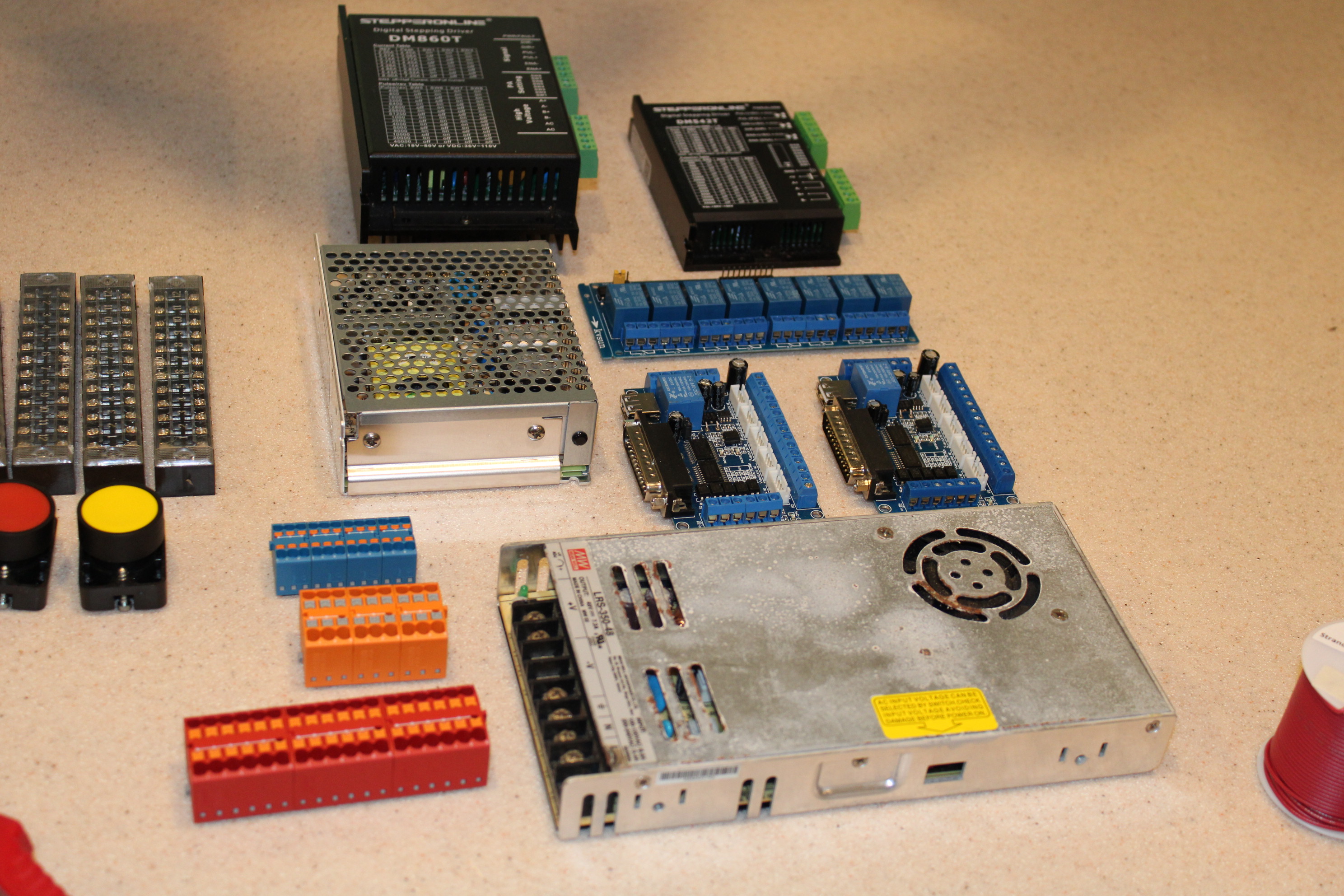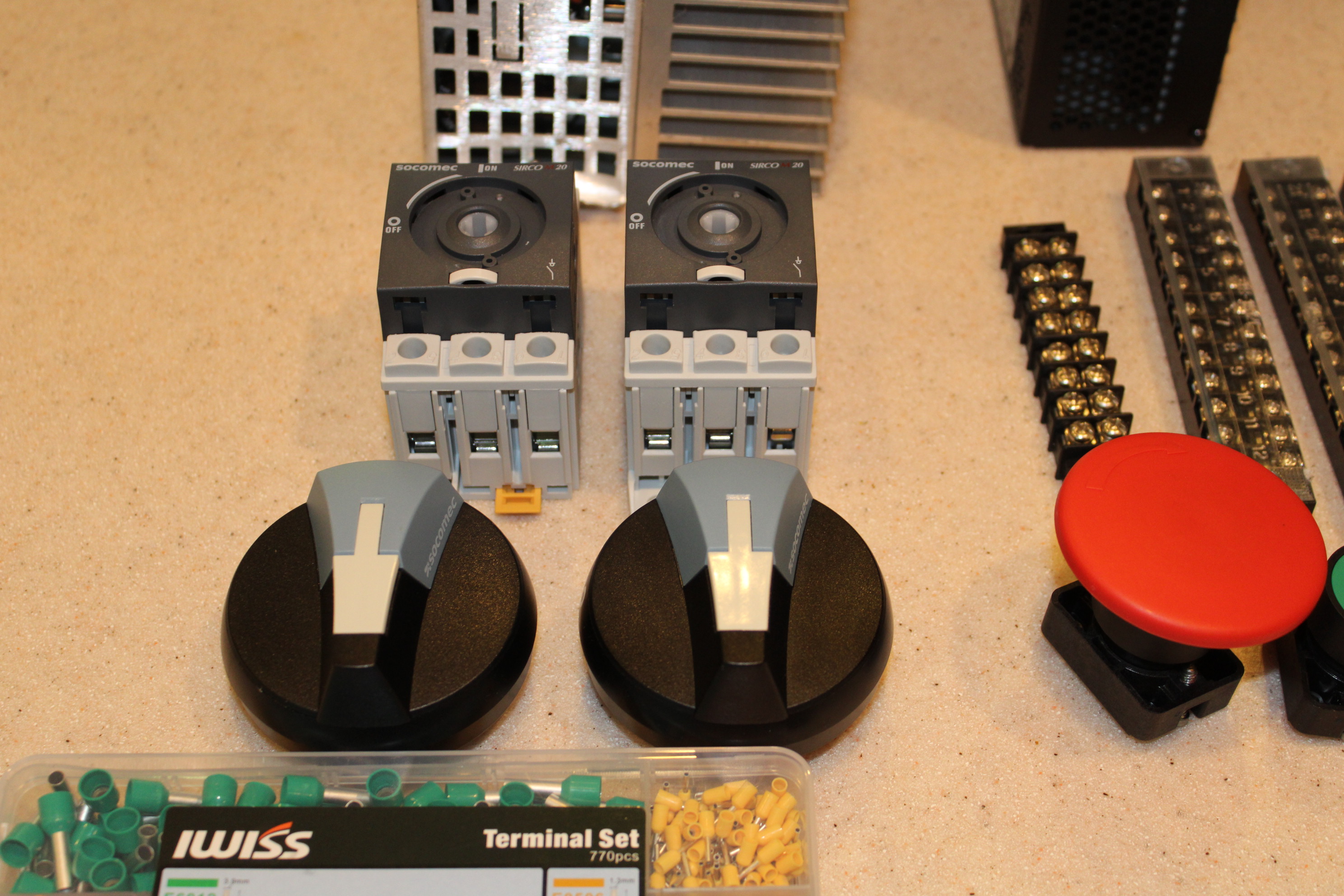I have most of the things I need together to get the new electronics box going. This time I tried to make sure I had all my ducks in a row and had sufficient quantity and quality of parts to make sure everything works reliably for a while. I got some proper disconnect switches to control power to the machine, terminals, terminal blocks, cable glands, cable tubing, crimping tools, power distribution blocks, etc.
Here is most of the stuff that will be in the electronics box. (Minus the dish soap and sponge, that will stay in the kitchen)

There will be 2 power supplies. One shows some corrosion because it spent some time powering an LED light above my old saltwater fish tank. That one is 48v and will run the 4th axis and tool changer stepper motors. The other is a 5, 12, and 24v power supply that will run most of the extras. Then there are 2 parallel port breakout boards which will handle the interface with the computer. Those should have more than enough IO for the machine. Above those is a relay board with 8 relays. That will control the draw bar, the tool changer air cylinder, spindle enable/disable, 4th axis brake, air blast solenoid, mist solenoid, and flood coolant pump. That leaves one more for something I am sure I am forgetting. Above those are the 2 stepper drives for the 4th axis and tool changer. At some point I might get some Clearpath servos to replace those steppers, but for now, I have steppers and I would like to put them to work. To the left of the 48v power supplies is the power distribution blocks. I found those on Mouser and they are inexpensive and pretty awesome in theory. They have adhesive backs to stick them to the electronics box surface and the big ones can handle insane power in theory (Something like 600v at 40 amps if I am remembering right. Don't quote me on that). Those will distribute the 120v line, the 240v line, and the multi voltage power supply.

I picked up these disconnect switches from automation direct and I was thrown by the size of the knobs... I was not expecting them to be so massive. The switches are rated at 600v/20 amps each. One for the 120v line and the 240v line. I feel like there is a way to use just the 240v line and convert it to 120v inside the electronics box, but I couldn't figure that out with a few hours research, so I decided to just have 2 input lines.




